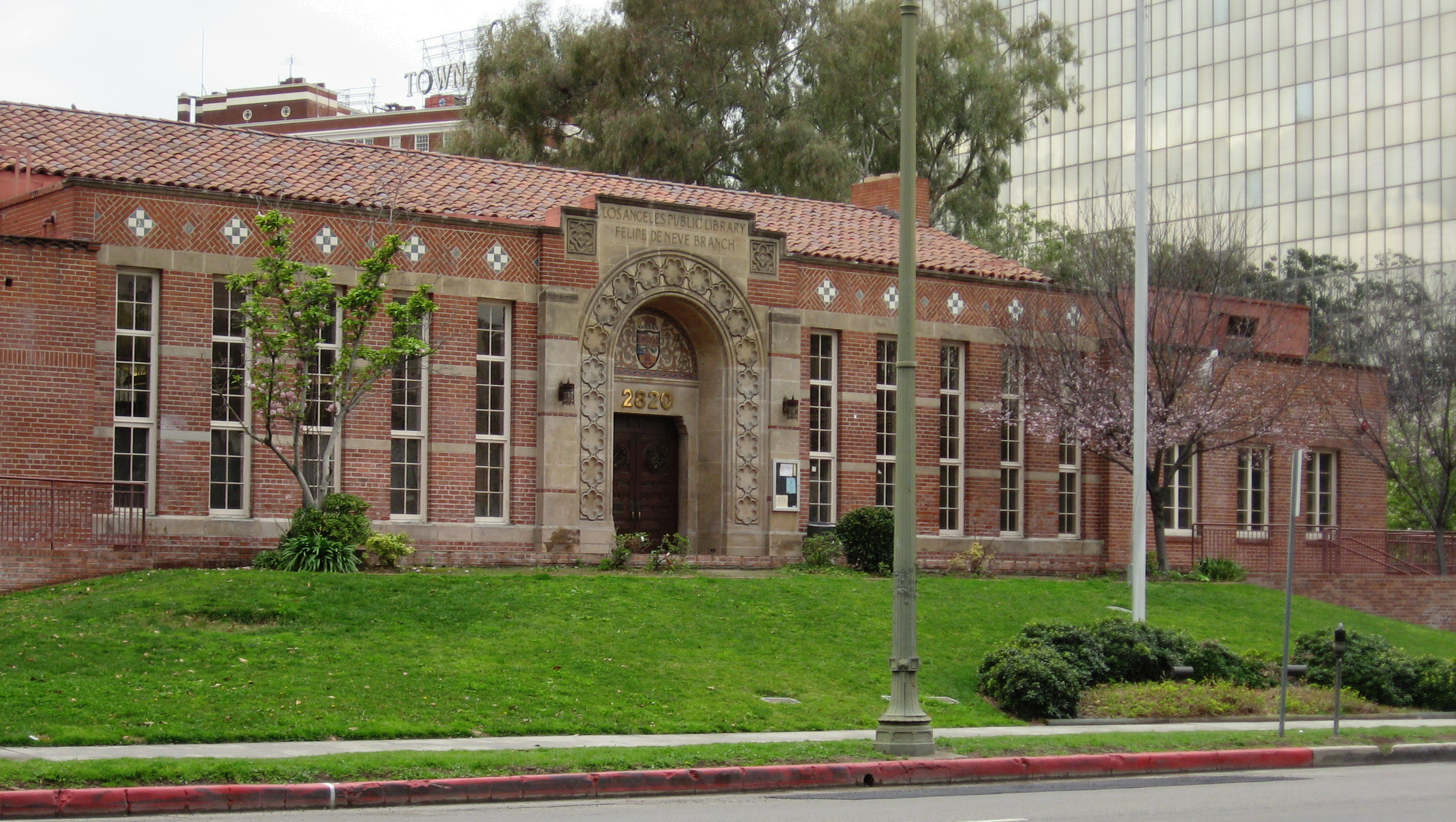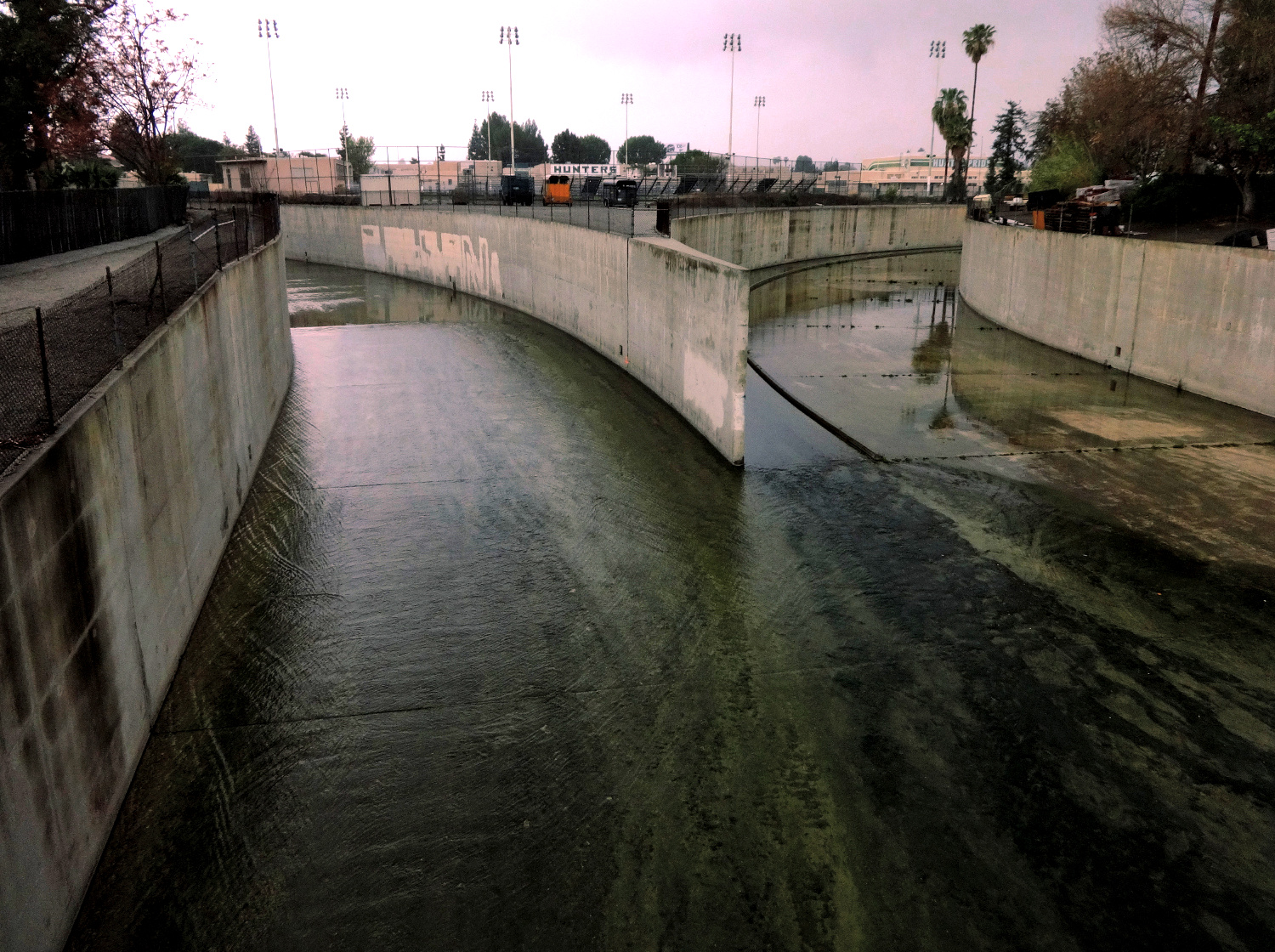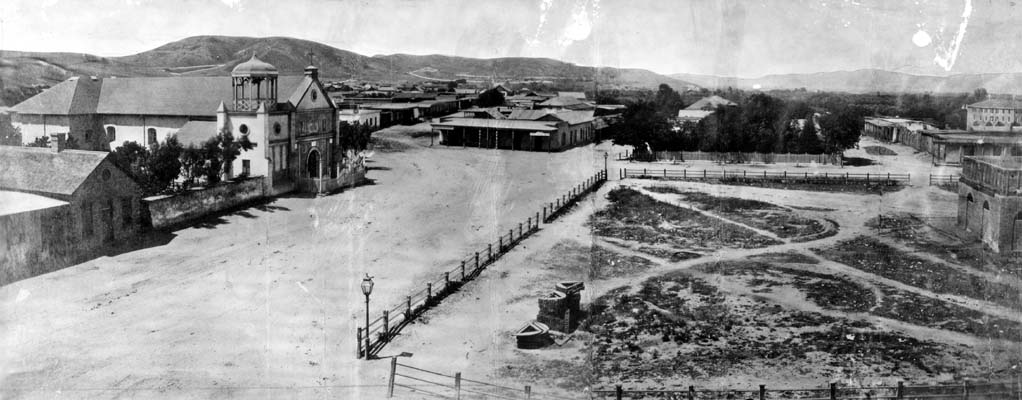|
Felipe De Neve
Felipe de Neve y Padilla (1724 – 3 November 1784) was a Spanish soldier who served as the 4th Governor of the Californias, from 1775 to 1782. Neve is considered one of the founders of Los Angeles and was instrumental in the foundation of San Jose and Santa Barbara. Early life and career Early life Born in Bailén, Spain, Neve was the son of Mary D. Padilla y Costilla and Felipe de Neve Noguera Castro y Figueroa and was born into one of the well-respected families of Andalucia. Neve entered the military in 1744 at about 16 years of age. Neve served as a soldier in Cantabria, Flanders, Milan, and Portugal before arriving in New Spain. During his time as a major he administered the colleges of Zacatecas, New Spain. Neve was appointed as acting Governor of Las Californias on October 18, 1774 by Viceroy Antonio Maria de Buareli y Ursua. For the first two years of his appointment, Neve was based in Loreto, Baja California and later moved to Monterey California. Las Califor ... [...More Info...] [...Related Items...] OR: [Wikipedia] [Google] [Baidu] |
El Pueblo De Los Ángeles Historical Monument
El Pueblo de Los Ángeles Historical Monument, also known as Los Angeles Plaza Historic District and formerly known as El Pueblo de Los Ángeles State Historic Park, is a historic district taking in the oldest section of Los Angeles, known for many years as ''El Pueblo de Nuestra Señora la Reina de los Ángeles del Río de Porciúncula''. The district, centered on the old plaza, was the city's center under Spanish (1781–1821), Mexican (1821–1847), and United States (after 1847) rule through most of the 19th century. The 44-acre park area was designated a state historic monument in 1953 and listed on the National Register of Historic Places in 1972. Historic images File:LA founding pueblo marker detail.jpg, Inscription on historical marker "El Pueblo de Nuestra Señora La Reina de Los Ángeles - Felipe de Neve - September Fourth 1781" Image:LosAngeles-Plaza-1869.jpg, Plaza in 1869 File:LA-plaza-1876.jpg, Los Angeles Plaza (1876) File:Lugo Adobe housing Leeching Hung and Co.p ... [...More Info...] [...Related Items...] OR: [Wikipedia] [Google] [Baidu] |
Monterey, California
Monterey (; es, Monterrey; Ohlone: ) is a city located in Monterey County on the southern edge of Monterey Bay on the U.S. state of California's Central Coast. Founded on June 3, 1770, it functioned as the capital of Alta California under both Spain (1804–1821) and Mexico (1822–1846). During this period, Monterey hosted California's first theater, public building, public library, publicly-funded school, printing-press, and newspaper. It was originally the only port of entry for all taxable goods in California. In 1846, during the Mexican–American War of 1846–1848, the United States Flag was raised over the Customs House. After Mexico ceded California to the U.S. at the end of the war, Monterey hosted California's first constitutional convention in 1849. The city occupies a land area of and the city hall is at above sea level. The 2020 census recorded a population of 30,218. Monterey and the surrounding area have attracted artists since the late 19th-century, an ... [...More Info...] [...Related Items...] OR: [Wikipedia] [Google] [Baidu] |
Tongva People
The Tongva ( ) are an Indigenous peoples of California, Indigenous people of California from the Los Angeles Basin and the Channel Islands of California, Southern Channel Islands, an area covering approximately . Some descendants of the people prefer Kizh as an Endonym and exonym, endonym that, they argue, is more historically accurate. In the precolonial era, the people lived in as many as 100 villages and primarily identified by their village rather than by a pan-tribal name. During colonization, the Spanish referred to these people as Gabrieleño and Fernandeño, names derived from the Spanish missions in California, Spanish missions built on their land: Mission San Gabriel Arcángel and Mission San Fernando Rey de España. ''Tongva'' is the most widely circulated endonym among the people, used by Narcisa Higuera in 1905 to refer to inhabitants in the vicinity of Mission San Gabriel. Along with the neighboring Chumash people, Chumash, the Tongva were the most influential peopl ... [...More Info...] [...Related Items...] OR: [Wikipedia] [Google] [Baidu] |
Juan Crespí
Joan Crespí or Juan Crespí (1 March 1721 – 1 January 1782) was a Franciscan missionary and explorer of Las Californias. Biography A native of Majorca, Crespí entered the Franciscan order at the age of seventeen. He came to New Spain in 1749, and accompanied explorers Francisco Palóu and Junípero Serra. In 1767 he went to the Baja California Peninsula and was placed in charge of the Misión La Purísima Concepción de Cadegomó. In 1769, Crespí joined the expedition led by Gaspar de Portolá and Junípero Serra (see Timeline of the Portolá expedition). He traveled in the vanguard of the land expedition to San Diego, led by Captain Fernando Rivera y Moncada, where a presidio and mission were established. Crespí then continued north with Portolá and Rivera to identify the port of Monterey. Because he was the only one of the Franciscans to make the entire journey by land, Crespí became the first official diarist for the missions. He was one of three diarists to do ... [...More Info...] [...Related Items...] OR: [Wikipedia] [Google] [Baidu] |
Los Angeles River
, name_etymology = , image = File:Los Angeles River from Fletcher Drive Bridge 2019.jpg , image_caption = L.A. River from Fletcher Drive Bridge , image_size = 300 , map = LARmap.jpg , map_size = 300 , map_caption = Map of the Los Angeles River watershed , pushpin_map = , pushpin_map_size = , pushpin_map_caption= , subdivision_type1 = Country , subdivision_name1 = United States , subdivision_type2 = State , subdivision_name2 = California , subdivision_type3 = , subdivision_name3 = , subdivision_type4 = , subdivision_name4 = , subdivision_type5 = Cities , subdivision_name5 = Burbank, Glendale, Los Angeles, Downey, Compton, Long Beach , length = U.S. Geological Survey. National Hydrography Dataset high-resolution flowline dataThe National Map, accessed 2011-05-07 , width_min = , width_avg = , width_max = , depth_min ... [...More Info...] [...Related Items...] OR: [Wikipedia] [Google] [Baidu] |
Pueblo De Los Ángeles
El Pueblo de Nuestra Señora la Reina de los Ángeles (English language, English: ''The town of Our Lady the Queen of the Angels''), shortened to Pueblo de los Ángeles, was the Spanish civilian ''Municipality, pueblo'' settled in 1781, which by the 20th century became the American metropolis of Los Angeles. The pueblo was built using labor from the adjacent village of Yaanga and was totally dependent on local Indigenous peoples of California, Indigenous labor for its survival. Official settlements in Alta California were of three types: ''presidio'' (military), ''Spanish missions in California, mission'' (religious) and ''pueblo'' (civil). The Pueblo de los Ángeles was the second pueblo (town) created during the Spanish colonization of the Americas, Spanish colonization of California (the first was History of San Jose, California#First Spanish pueblo in California San José/, San Jose, in 1777). —'The Town of the Queen of Angels' was founded twelve years after the first '' ... [...More Info...] [...Related Items...] OR: [Wikipedia] [Google] [Baidu] |
Presidio Of Monterey
The Presidio of Monterey (POM), located in Monterey, California, is an active US Army installation with historic ties to the Spanish colonial era. Currently, it is the home of the Defense Language Institute Foreign Language Center (DLI-FLC). It is the last and only Presidio in California to have an active military installation. History The Spanish explorer Sebastián Vizcaíno visited, named and charted Monterey Bay (especially the southern end) in 1602. In his official report, Vizcaíno recommended the natural harbor he found as an appropriate site for a seaport, military fortification and colonization. It would be over 150 years, until news of Pacific Coast moves by Spain's European rivals brought the remote area back to the attention of the leaders of New Spain. José de Gálvez's grand plan In 1768, José de Gálvez, special deputy (''visitador'') of King Carlos III in New Spain (Mexico), received this order: "Occupy and fortify San Diego and Monterey for God and the ... [...More Info...] [...Related Items...] OR: [Wikipedia] [Google] [Baidu] |
Alta California
Alta California ('Upper California'), also known as ('New California') among other names, was a province of New Spain, formally established in 1804. Along with the Baja California peninsula, it had previously comprised the province of , but was split off into a separate province in 1804 (named ). Following the Mexican War of Independence, it became a territory of Mexico in April 1822 and was renamed in 1824. The territory included all of the modern U.S. states of California, Nevada, and Utah, and parts of Arizona, Wyoming, Colorado, and New Mexico. In the 1836 Siete Leyes government reorganization, the two Californias were once again combined (as a single ). That change was undone in 1846, but rendered moot by the U.S. military occupation of California in the Mexican-American War. Neither Spain nor Mexico ever colonized the area beyond the southern and central coastal areas of present-day California and small areas of present-day Arizona, so they exerted no effective cont ... [...More Info...] [...Related Items...] OR: [Wikipedia] [Google] [Baidu] |
The Californias
The Californias (Spanish: ''Las Californias''), occasionally known as The Three Californias or Two Californias, are a region of North America spanning the United States and Mexico, consisting of the U.S. state of California and the Mexican states of Baja California and Baja California Sur. Historically, the term ''Californias'' was used to define the vast northwestern region of Spanish America, as the ''Province of the Californias'' ( es, Provincia de las Californias), and later as a collective term for Alta California and the Baja California Peninsula. Originally a single, vast entity within the Spanish Empire, as the Californias became defined in their geographical limits, their administration was split various times into Baja California (''Lower California'') and Alta California (''Upper California''), especially during the Mexican control of the region, following the Mexican War of Independence. As a part of the Mexican–American War (1846–48), the American Conquest of ... [...More Info...] [...Related Items...] OR: [Wikipedia] [Google] [Baidu] |
Viceroy Of New Spain
The following is a list of Viceroys of New Spain. In addition to viceroys, the following lists the highest Spanish governors of the Viceroyalty of New Spain, before the appointment of the first viceroy or when the office of viceroy was vacant. Most of these individuals exercised most or all of the functions of viceroy, usually on an interim basis. Governor of the West Indies This office covered the territories that were discovered by Christopher Columbus. : 1492–1499 – Christopher Columbus, as governor and viceroy of the West Indies : 1499–1502 – Francisco de Bobadilla, as governor of the West Indies : 1502–1509 – Nicolás de Ovando y Cáceres, as governor of the West Indies : 1509–1518 – Diego Columbus, as governor of the West Indies until 1511, thereafter as viceroy Governor of New Spain This office covered the territories that were claimed by Hernán Cortés. The office covered the territories that were under the control of the Governor of the Indies after 152 ... [...More Info...] [...Related Items...] OR: [Wikipedia] [Google] [Baidu] |
Antonio María De Bucareli Y Ursúa
Antonio is a masculine given name of Etruscan origin deriving from the root name Antonius. It is a common name among Romance language-speaking populations as well as the Balkans and Lusophone Africa. It has been among the top 400 most popular male baby names in the United States since the late 19th century and has been among the top 200 since the mid 20th century. In the English language it is translated as Anthony, and has some female derivatives: Antonia, Antónia, Antonieta, Antonietta, and Antonella'. It also has some male derivatives, such as Anthonio, Antón, Antò, Antonis, Antoñito, Antonino, Antonello, Tonio, Tono, Toño, Toñín, Tonino, Nantonio, Ninni, Totò, Tó, Tonini, Tony, Toni, Toninho, Toñito, and Tõnis. The Portuguese equivalent is António (Portuguese orthography) or Antônio (Brazilian Portuguese). In old Portuguese the form Antão was also used, not just to differentiate between older and younger but also between more and less important. In Galician ... [...More Info...] [...Related Items...] OR: [Wikipedia] [Google] [Baidu] |
History Of San Jose, California
San Jose, California, is the third largest city in the state, and the largest of all cities in the San Francisco Bay Area and Northern California, with a population of 1,021,795. Site chosen by Anza For thousands of years before the arrival of European settlers, the area now known as San Jose was inhabited by several groups of Ohlone Native Americans. Permanent European presence in the area came with the 1770 founding of the Presidio of Monterey and Mission San Carlos Borromeo de Carmelo by Gaspar de Portolà and Junípero Serra, about sixty miles (100 km) to the south. Don Pedro Fages, the military governor at Monterey, passed through the area on his 1770 and 1772 expeditions to explore the East Bay and Sacramento River Delta. Late in 1775, Juan Bautista de Anza led the first overland expedition to bring colonists from New Spain (Mexico) to California and to locate sites for two missions, one presidio, and one pueblo (town). He left the colonists at Monterey in 1776, and e ... [...More Info...] [...Related Items...] OR: [Wikipedia] [Google] [Baidu] |

.jpg)




.jpg)
_(cropped).gif)

